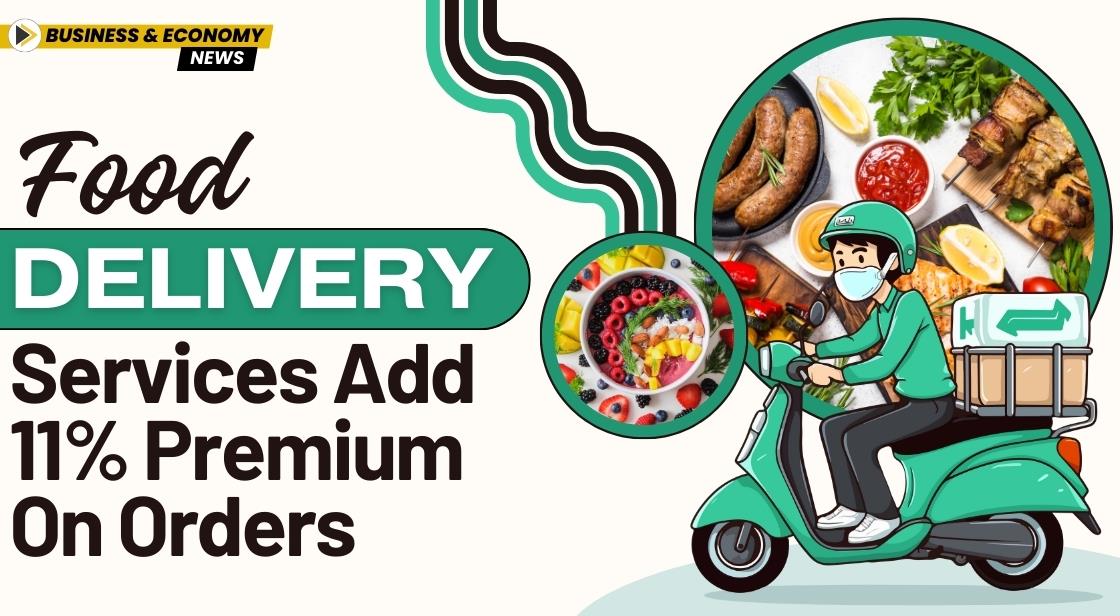Food Delivery Services Add 11% Premium on Orders

News Synopsis
A recent study by Mavericks has revealed that consumers pay an average 11% premium when using popular food delivery apps compared to ordering directly from restaurants. The report, which analyzed pricing data from over 50 restaurants across Swiggy, Zomato, and Magic Pin, highlights the various factors contributing to this increased cost. The study compared base prices, delivery fees, GST, packaging charges, and additional surcharges as of August 21.
Base Price Premium and Additional Costs
While the base price on aggregator platforms is only 1.6% higher than that of direct restaurant orders, additional costs push the total premium to 11%. These extra costs include delivery fees, packaging charges, and platform-specific fees, which significantly inflate the final amount consumers pay. Aggregator platforms add extra fees ranging from Rs 5.38 to Rs 7, which are not present when ordering directly from restaurants.
Delivery Fees and Packaging Charges
The report highlights that delivery fees charged by aggregator platforms are 150-200% higher compared to those of restaurants' own delivery channels. Interestingly, 46% of the surveyed restaurants do not impose any delivery fee when customers order directly. However, nearly all restaurants list a delivery fee on aggregator platforms. This discrepancy contributes substantially to the overall price increase for consumers.
Premium Pricing on Desserts and Vegetarian Dishes
The study found that desserts are consistently priced at a premium of up to 15% on aggregator platforms compared to direct restaurant ordering. Additionally, vegetarian dishes face an 11% price increase on aggregator platforms, even though only 25% of customers are vegetarian. This pricing strategy reflects the broader trend of higher costs for certain types of food items on delivery apps.
Pricing Trends for Chain Restaurants
Chain restaurants, which operate multiple branches, generally charge lower delivery and packaging fees. Despite this, aggregator platforms often do not pass these savings on to consumers. The report notes that the pricing remains relatively consistent across different types of establishments, regardless of the operational efficiencies that chain restaurants may achieve. Additionally, aggregator platforms are estimated to generate Rs 400-460 crores annually from packaging charges alone.
Evaluation of Premium Subscriptions
The study also examined the value proposition of premium subscriptions offered by food delivery platforms. It found that these subscriptions often offer limited additional value, particularly for orders above Rs 199. Non-subscribed users can frequently access similar benefits without the need for a subscription, questioning the overall worth of these premium services.
Higher Delivery Fees at Dine-In Restaurants
Dine-in restaurants face an average delivery fee of Rs 6.5 higher compared to other establishments. This may reflect a pricing strategy based on the perceived premium status or the willingness of customers to pay more for dine-in experiences. The disparity in delivery fees underscores the varied pricing strategies employed by different types of restaurants.
Conclusion
The Mavericks study provides a comprehensive look into the hidden costs of using food delivery platforms compared to ordering directly from restaurants. With an average 11% premium driven by various additional charges, consumers are paying significantly more for the convenience of delivery apps. The findings also shed light on the inconsistent application of delivery fees and packaging charges, as well as the limited benefits of premium subscriptions. As consumers navigate the complexities of food delivery pricing, this report serves as a crucial resource for understanding the true cost of convenience.
You May Like









